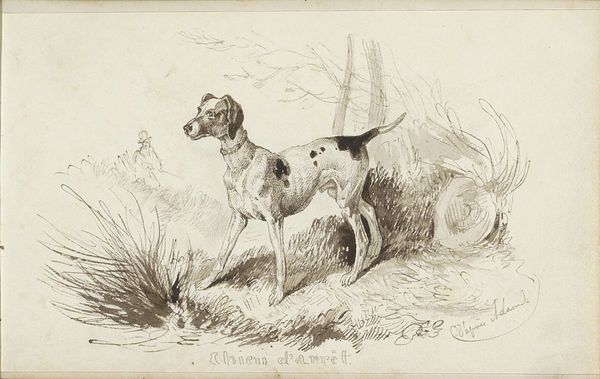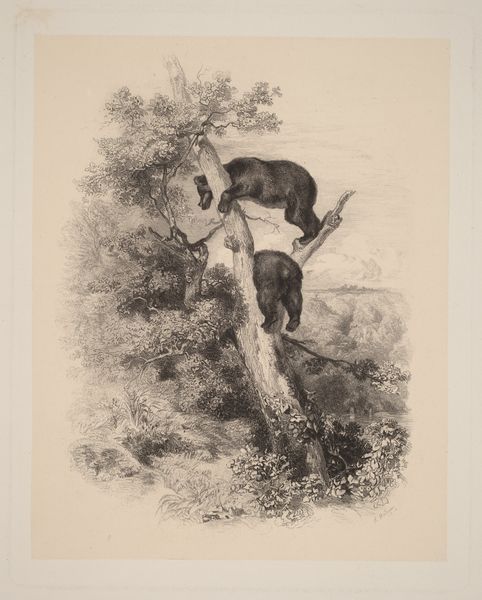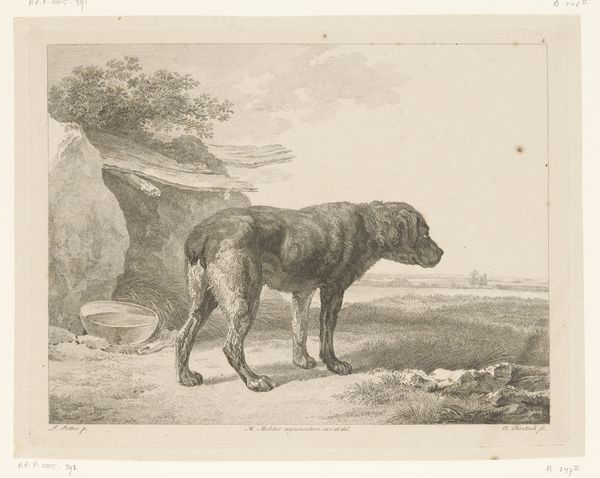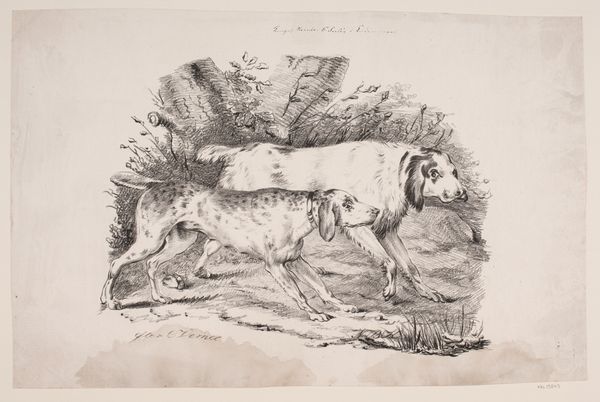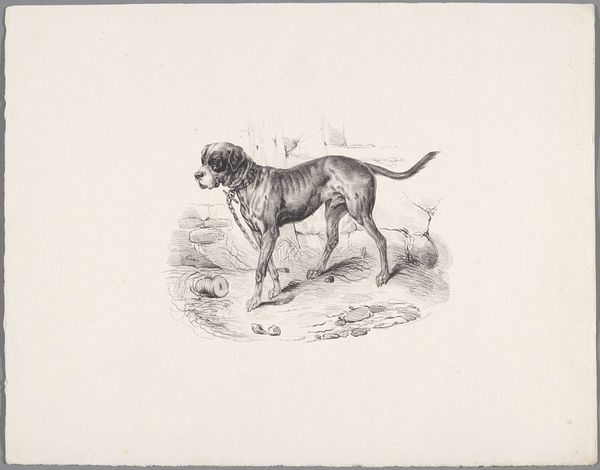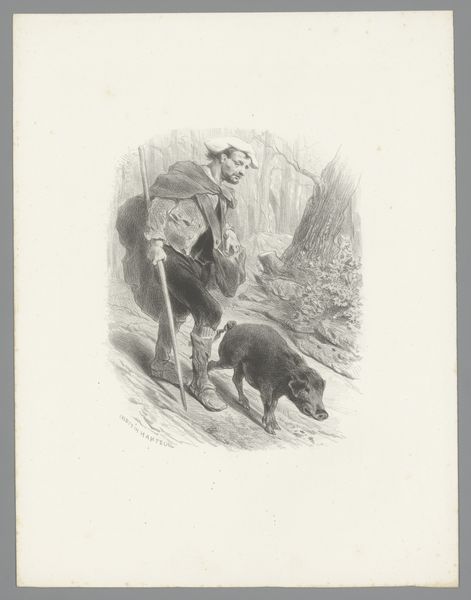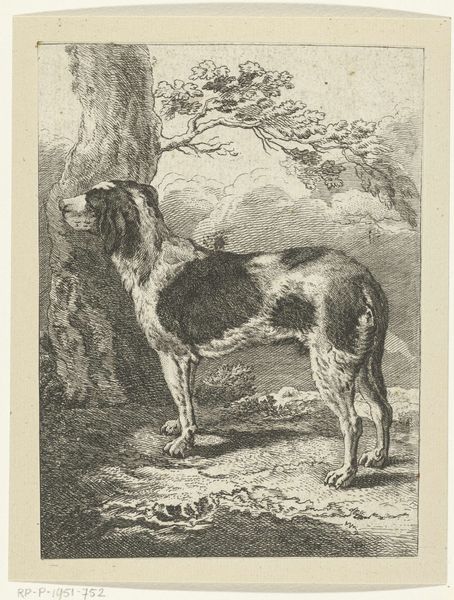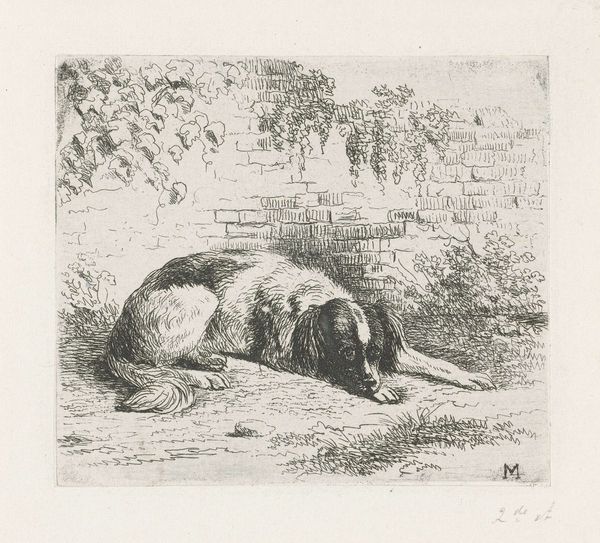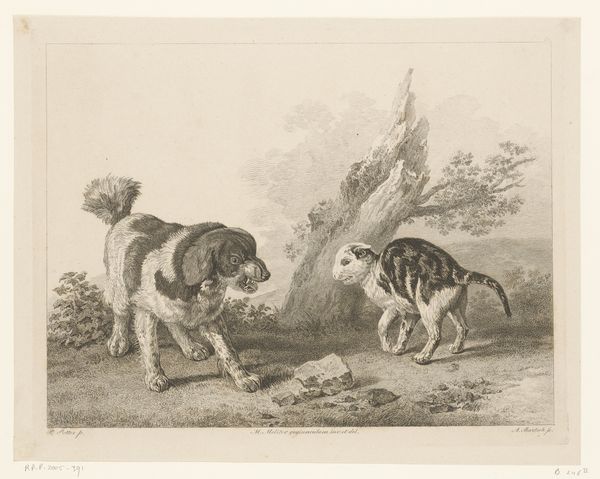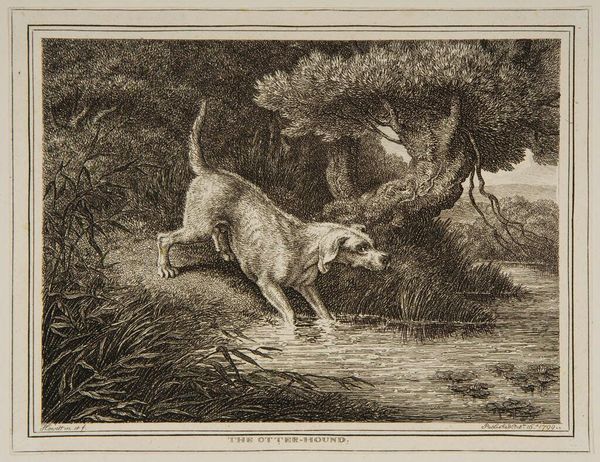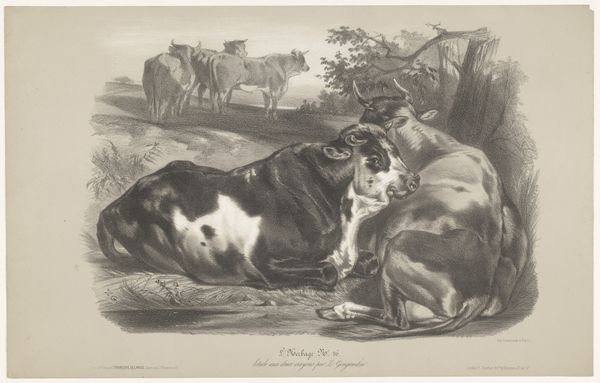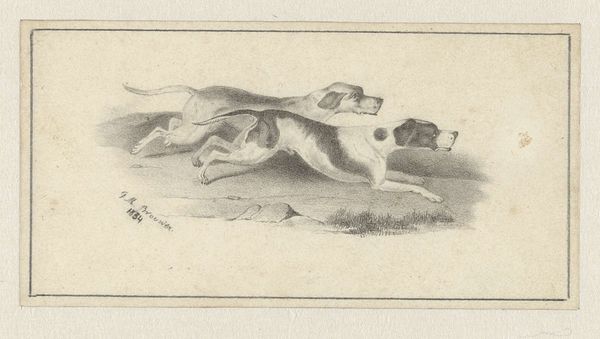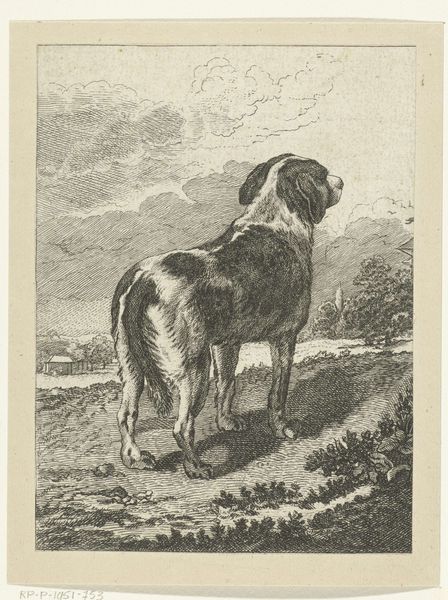
print, engraving
#
animal
# print
#
old engraving style
#
landscape
#
romanticism
#
genre-painting
#
engraving
Dimensions: height 270 mm, width 345 mm
Copyright: Rijks Museum: Open Domain
Editor: This is "Hunting Dog and Pheasant" by Carle Vernet, made between 1831 and 1836. It's an engraving. I’m really drawn to the dynamic pose of the dog; there's a palpable tension in its lean musculature. How does the composition strike you? Curator: It is a study in contrasts. Observe the meticulous detail given to the dog’s form in the foreground, juxtaposed against the blurred atmospheric rendering of the background landscape. Note the oval vignette format, which seems to compress the pictorial space, intensifying the encounter between the hound and its quarry. Do you see how the lines create a sense of depth? Editor: Yes, the oval shape almost isolates the scene, like a world within a world. And the light and shadow really highlight the dog’s alert posture. It seems poised to spring forward any moment. But why an engraving? Curator: Consider the materiality. The very nature of engraving—its reliance on incised lines—forces a distilled representation. Vernet harnesses this to accentuate form and texture. The fine hatching defines the muscularity of the dog. Note the contrast between smooth coat and the ruffled feathers. Editor: So, the technique isn’t just a choice; it fundamentally shapes our perception of the subject. What can we read from that compressed form, the detailed versus blurred and how these play out within the oval space? Curator: Precisely! The tension between foreground and background, sharp focus and hazy atmosphere, is critical. It speaks to the immediacy and potential danger of the hunt. But also, consider the limitations and possibilities the artist is exploring with a particular visual language. Editor: That’s a really insightful way of looking at it. I never really thought about how much the medium itself contributes to the meaning. Thank you! Curator: Indeed. Now you might look at any artwork from the lens of its components. Good luck with your studies.
Comments
No comments
Be the first to comment and join the conversation on the ultimate creative platform.
